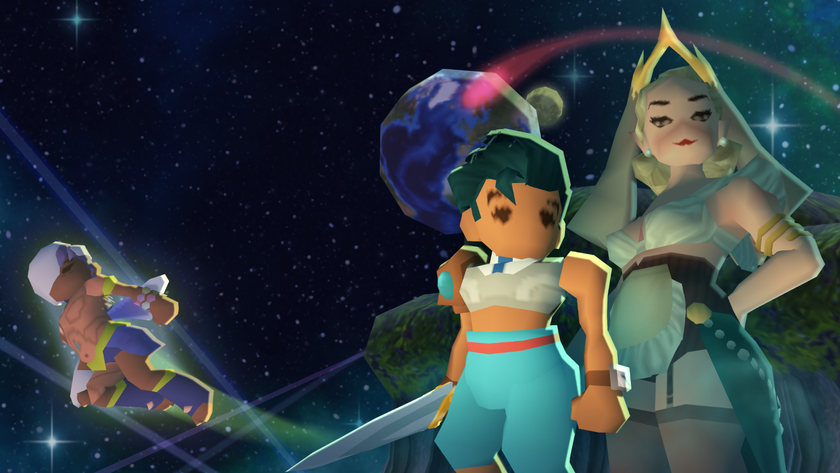Uncharted stole more from other games than Nathan Drake ever stole from ancient tombs
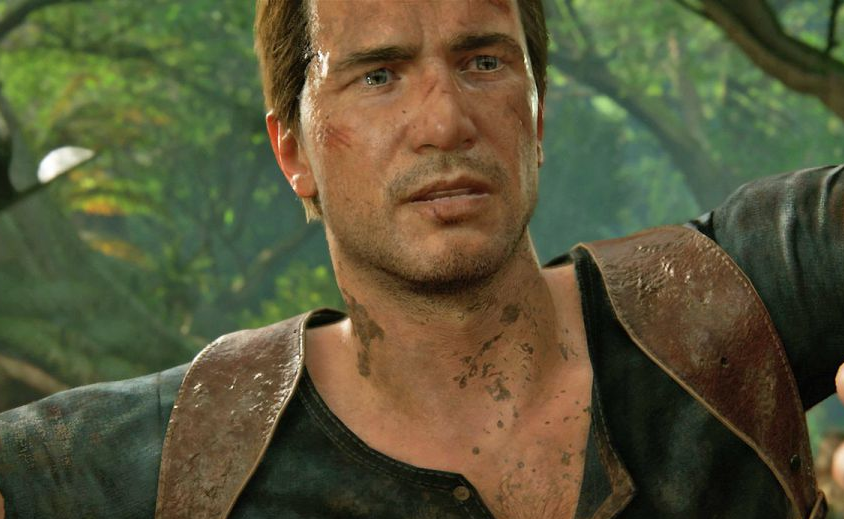
Very few video games are entirely original. However much the average press release might like to talk about ‘innovative gameplay’, that is ‘built from the ground up’, to deliver ‘never before seen experiences’, all any of that actually means is ‘we made a new video game and we hope it’s a bit better than our last version of it’.
No, games are mostly about iteration, not revolution, and that’s fine. In a medium with so many systemic, aesthetic, and narrative moving parts, a philosophy of steadily honing and fine-tuning is a good way to work indeed. Plenty of great ideas are let down by less-than-great execution the first time round, and loads more are improved later down the line by cross-pollination with other, initially unrelated designs. And Nathan Drake is practically the poster boy for the latter situation.
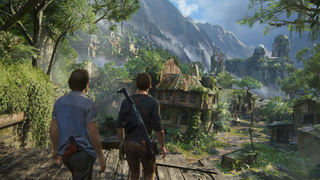
Brilliant as the Uncharted series is, it has barely a single original idea under the hood, instead acting as a highly polished convergence point for decades of disparate game design ideas that came before it. You can pin almost any element of the series down to a notable (or sometimes less so) precursor, so let’s have a look at where all the DNA came from, shall we? The answers, as desperate, terrible headline writers on the internet say, might surprise you.
The platforming
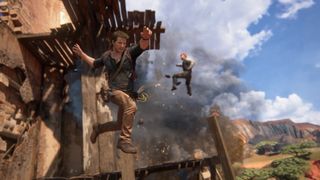
Let’s start with the most obvious through-line of inspiration. Well, I say “through-line”; in truth it’s a bit of a tangled path. You see, Uncharted’s athletic elements are actually the product of a very long, inspirational back-and-forth between two other series.
In 1989, Jordan Mechner put a new spin on platforming, one that favoured flowing, life-like animation and weighty character momentum, and which emphasised forward-planning over twitch skills. Prince of Persia was a game as methodical as it was visually spectacular, one whose strings of platforms, pits, booby traps and initially hidden paths had to be deciphered and then attacked with careful thought for spacing and speed. Also, it pretty much kickstarted that whole ‘miss the jump but dangle off the ledge’ thing that’s never, ever stopped being cool.
In 1996, Tomb Raider came along, took the same conceits, swapped swords for guns, and bumped it all over into the third dimension. Then in 2003, the Prince – now under the guidance of Ubisoft – took the idea back, injected it with a fresh shot of dynamism, and reworking its designs into complex, room-sized platform puzzles. Enter Uncharted in 2007, which refined this model, made it a bit more friendly to play and a fair bit more cinematic to behold, and then ran with it. Since then, Uncharted and Tomb Raider have alternately inspired each other, resulting in the latter series’ 2013 reboot and this year’s wider, less linear Uncharted 4.
The shooting
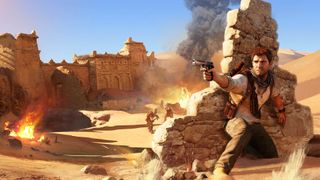
Here’s where it starts getting a bit more abstract. Uncharted is a cover-shooter, so the obvious point of inspiration is Gears of War, right? Or maybe Gears’ own, clunky inspiration in Namco’s Killswitch? Or Resident Evil 4, if we’re going to go to the real birth of over-the-shoulder, third-person gunplay? Well yes, all of these games have had influences on Uncharted, but in terms of the way that Naughty Dog reshaped all of the above conceits – Uncharted’s combat has always been far more fluid, madcap and scampery than that found in any of the above – there’s a slightly older shooter whose flavour is unmistakably present: Max Payne.
Sign up to the 12DOVE Newsletter
Weekly digests, tales from the communities you love, and more
Yep, old Mopey McDeadfamily might not have used a formal cover system – preferring instead to quickly duck behind furniture, and otherwise hide behind a solid wall of only the densest, most impenetrable metaphors – and Drake might not have the power of bullet-time dive-shooting at his disposal, but in terms of the overall feel and philosophy of their shooting, the two games are noticeably similar.
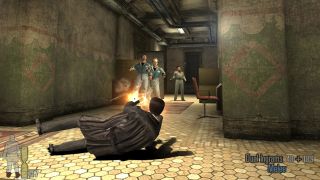
Where the early Gears games are largely A-to-B affairs, concerned with holding ground and steadily pushing forward, Payne and Uncharted have much more multidirectional combat, demanding constant, on-the-fly manoeuvring to avoid fire and make new lines of sight. Nate’s athleticism also has much more in common with Max than Marcus, his speed and directional versatility owing much to the deathwishing detective, their shared traits only compounded by Drake’s swift, rangy leaps and rolls. It’s perhaps rather telling that Payne dev Remedy’s latest, Quantum Break - with its fast blend of shooting and opportunistic melee - feels as much like a time-bending Uncharted as it does the noir shooter from which it evolved.
The punching
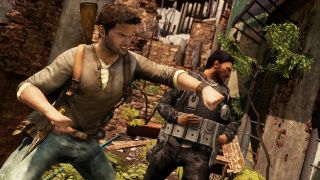
Speaking of melee, Uncharted’s impromptu beat-downs add a pretty unique feel to its organic battle-grounds. But in truth, their scrappy, deliberately unrefined, back-and-forth spectacle owes a lot to another previous game. A game, in fact, explicitly based on the Uncharted series’ most obvious cinematic inspiration: Indiana Jones.
2003’s Indiana Jones and the Emperor’s Tomb – released on Xbox, PS2, and PC – shares a hell of a lot of similarities with its imitator. Ledge climbing, cover-shooting, wall shimmying… It’s all there. Just check out the video above to see how closely both games adapted the traditional Indy vibe. But the most conspicuous echo comes in the hand-to-hand fighting. The stumbly, push-me, pull-you feel. The heavy, lumpy punches, and the chance that the hero might be unceremoniously floored at any moment. The quick, grapple-instigated beatdowns and environmental attacks. There’s a lot of Emperor’s Tomb in Uncharted, from visual design, to pacing, to level design, right down to those tropical birds that fly away when you get close. But the punching? Yeah, those might be Nathan Drake’s fists, but they’re being swung by Harrison Ford.
The set-pieces
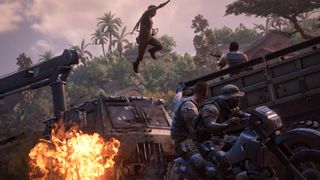
Uncharted arguably set a new bar for set-piece driven design last generation, pacing its excellent core gameplay with increasingly impressive, borderline incredulous, semi-scripted stand-out moments. Between the first three games, it modified the action with everything from standard issue driving breaks, to shootouts through sinking ships, to punch-ups at the open doors of in-flight planes, and obviously that train section. And the bit with the dangling train. Uncharted is good with trains.
But the idea of spicing up your standard gameplay with moments of more directed action was nothing new in 2007. During the development of the original Half-Life, Valve realised that the game was far more fun when set-pieces were happening than when it was a ‘pure’ shooter, and so built more into it. And then it really cranked things up for the sequel.
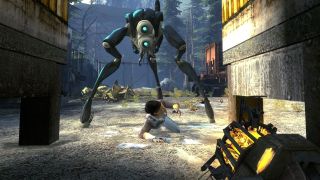
Call of Duty has obviously been great at this sort of structure for a very long time too, and Resident Evil 4 delivered a stunning third-person shooter variant in 2005. It’s almost impossible to pin down where set-piece driven game design started, though Half-Life is generally considered one of the most important texts. That said, 1991’s Another World is a spellbinding example of cinematic, dramatically directed action, from the same era as Super Mario World. So while Uncharted definitely elevated the form to a new level, it was undoubtedly standing on the shoulders of a great many giants as it did.
The narrative co-op AI
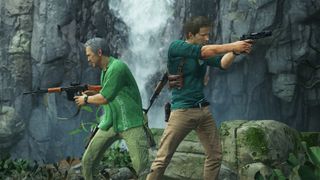
What I’m talking about here is the kind of co-op AI that doesn’t replace a missing second player (like Dom in Gears of War) or demand for a brief stint of deeply annoying babysitting (like Natalya in GoldenEye, or that idiot scientist guy in Doom 3), but the kind of character who’s always at your side in order to add narrative flavour and friendly human interaction to an otherwise distinctly solo campaign. The Sully, basically. The Elena, and the Chloe. Uncharted rapidly made this kind of thing a signature part of its storytelling, but the roots of the technique were, once again, planted a fair bit earlier.
You could look to Halo’s AI marines (the ‘I’ part is debatable), though they’re pretty disposable and die, unknown and forgotten, a lot. And I’m not counting Cortana, because she’s a glorified voice-over-the-radio rather than a real, persistent presence, and that trope has been around forever. You can argue that the original Half-Life instigated the idea with the random security guards and scientists it let you buddy up with, but again, those were vague, identikit non-characters who died all too quickly.
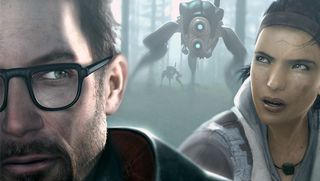
A better bet is 2004’s Half-Life 2, which introduced Alyx Vance, probably still the best AI companion in any game. Utterly indestructible, and a fantastically human connection to a world that you otherwise experience as a mute, floating gun, she’s the blueprint against which all other narrative co-op AI is judged, and arguably the inspiration for Nathan Drake’s ever-growing entourage of cohorts. Though there’s also a good dash of them in 2003’s Beyond Good & Evil, which makes a version of Zelda’s usually lonely dungeon exploration a great deal more personable with companions like Pey’j and Double H.
Cinematic scale
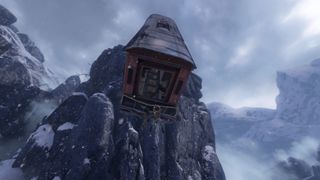
Those big camera pulls, where Uncharted is all ‘Oh, you thought this was impressive? Well now look how big this shit really is! OMG, jump carefully, tiny man, for the environment is unexpectedly big and very dangerous’?
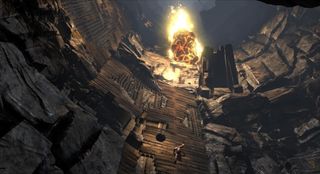
God of War, isn’t it? Basically, it’s God of War.
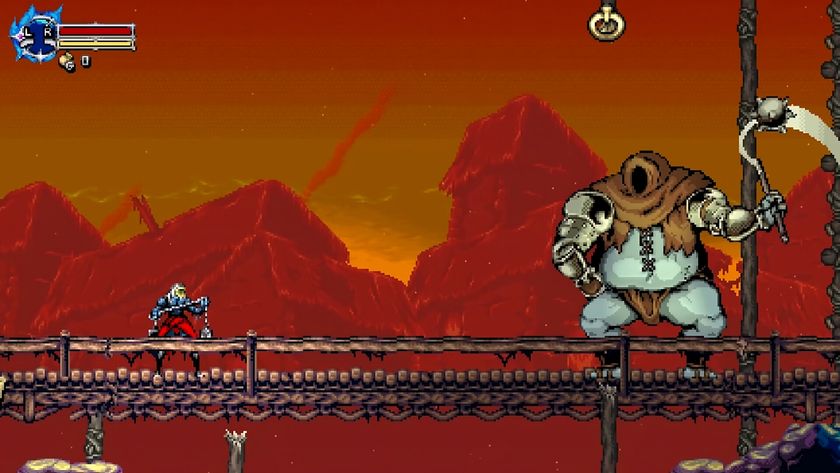
And you thought Hollow Knight: Silksong is late – 37 years in the making, this retro Metroidvania has a whip-smart Steam Next Fest demo that's as Castlevania as it gets

In Assassin's Creed Shadows, "Naoe and Yasuke share their progression" and you'll have to complete special quests to get the best abilities
Most Popular



